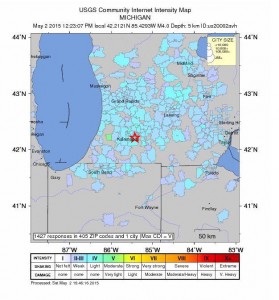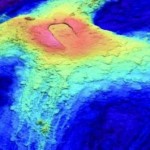On May 2, a rare earthquake shook Michigan, rolling in at magnitude 4.2, the second strongest quake recorded in the state. Fortunately, although items fell off of shelves and windows vibrated, the state suffered no major destruction or injuries from the quake.
 In contrast to the West Coast, where over 350 faults have been reliably identified in connection with plate boundaries, earthquakes in the eastern US often have mysterious origins. Deep and ancient faults underlie the sleeping giant of the eastern continent, but few of these faults faults have been definitively mapped.
In contrast to the West Coast, where over 350 faults have been reliably identified in connection with plate boundaries, earthquakes in the eastern US often have mysterious origins. Deep and ancient faults underlie the sleeping giant of the eastern continent, but few of these faults faults have been definitively mapped.
Michigan's 30-something recorded earthquakes have left no evidence at the surface, but the fault probably lies 60 miles deep; however, the focus of May's earthquake is placed at 3.7 miles below the surface.
While eastern US earthquakes are much less common, they have the potential to be devastating. The older, stiffer crust in the eastern US transmits the energy more than does the younger West Coast crust, meaning that earthquakes there are felt over an area more than ten times larger than would an earthquake of equivalent magnitude hitting the West Coast.






